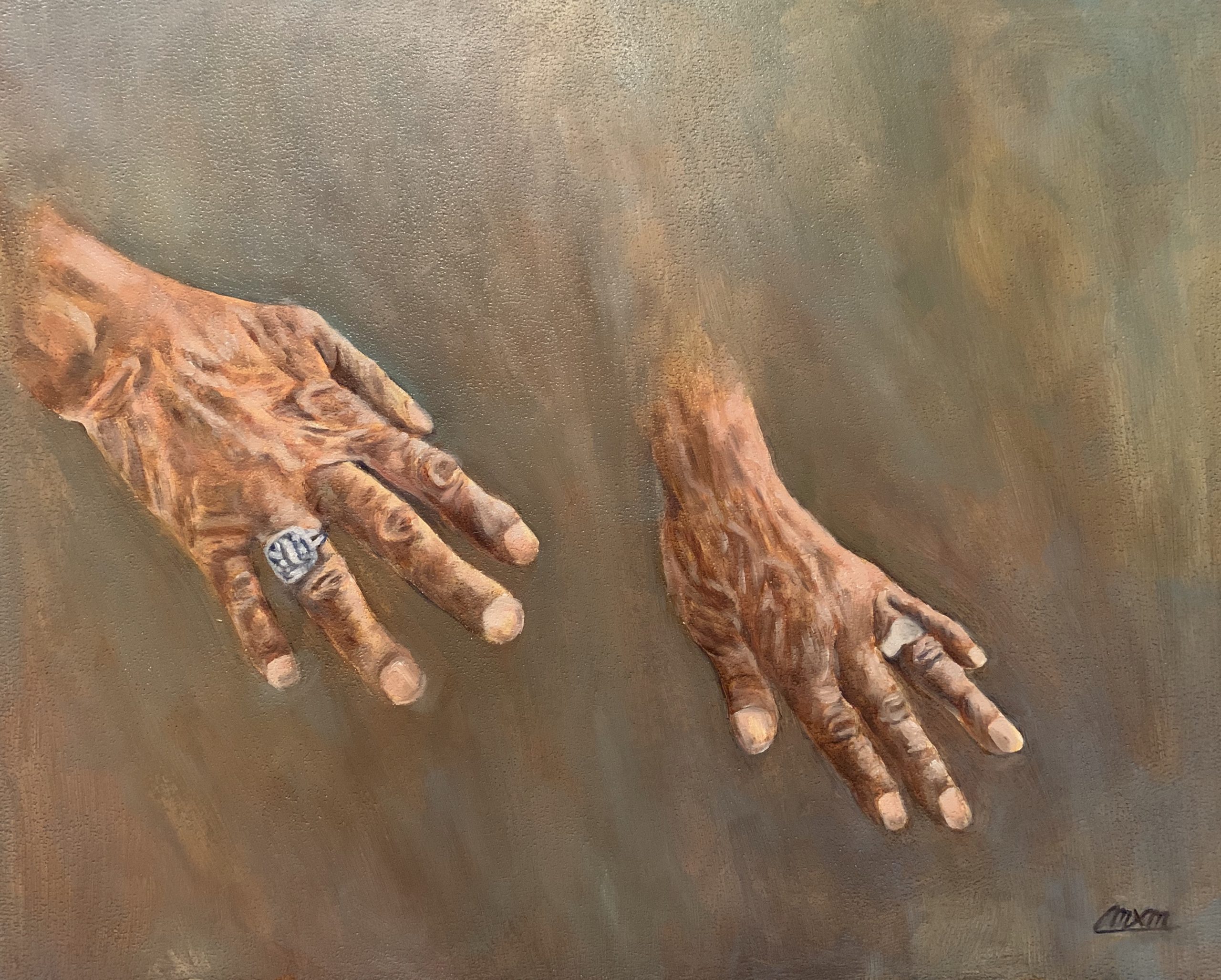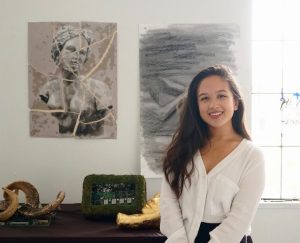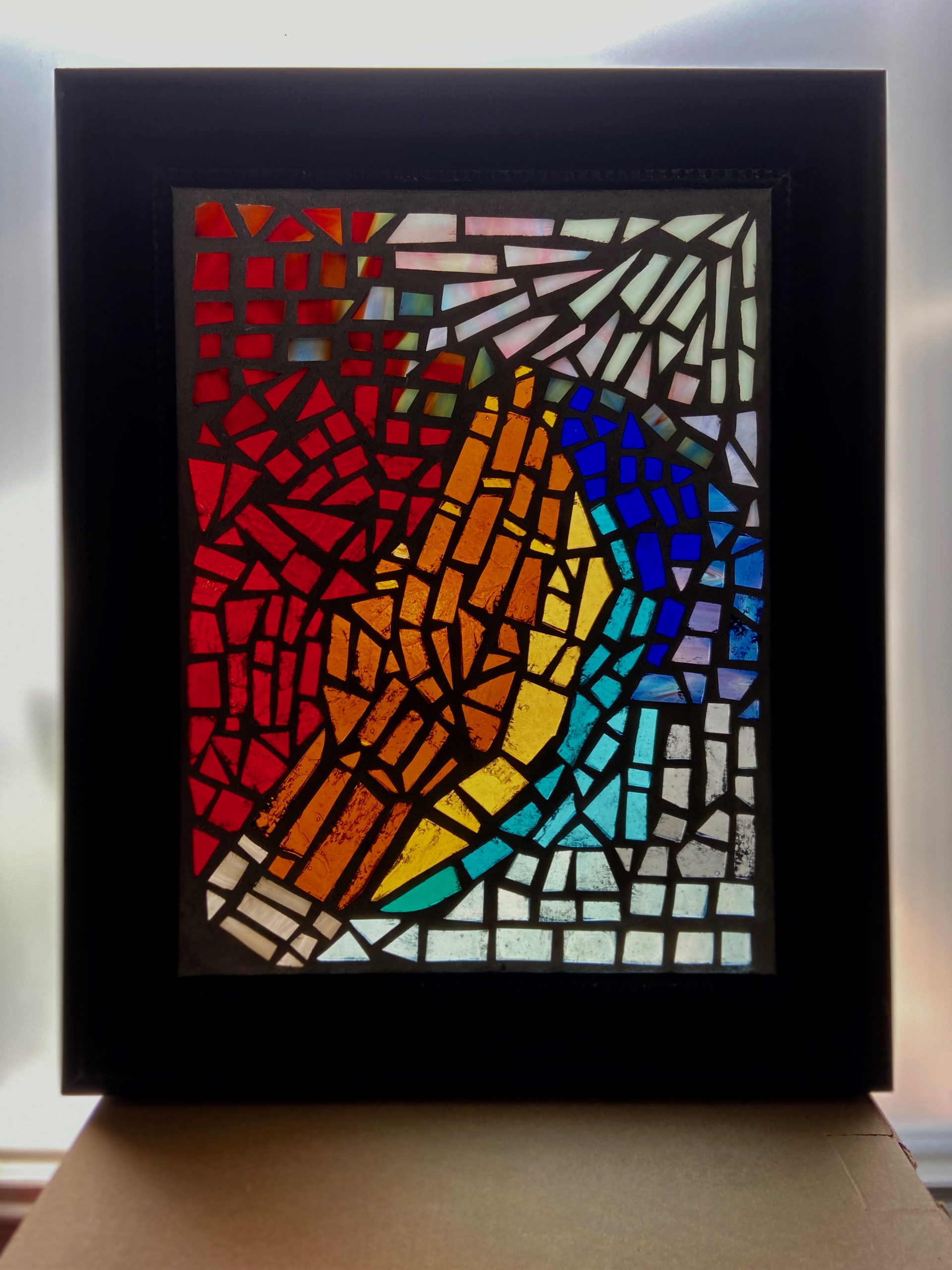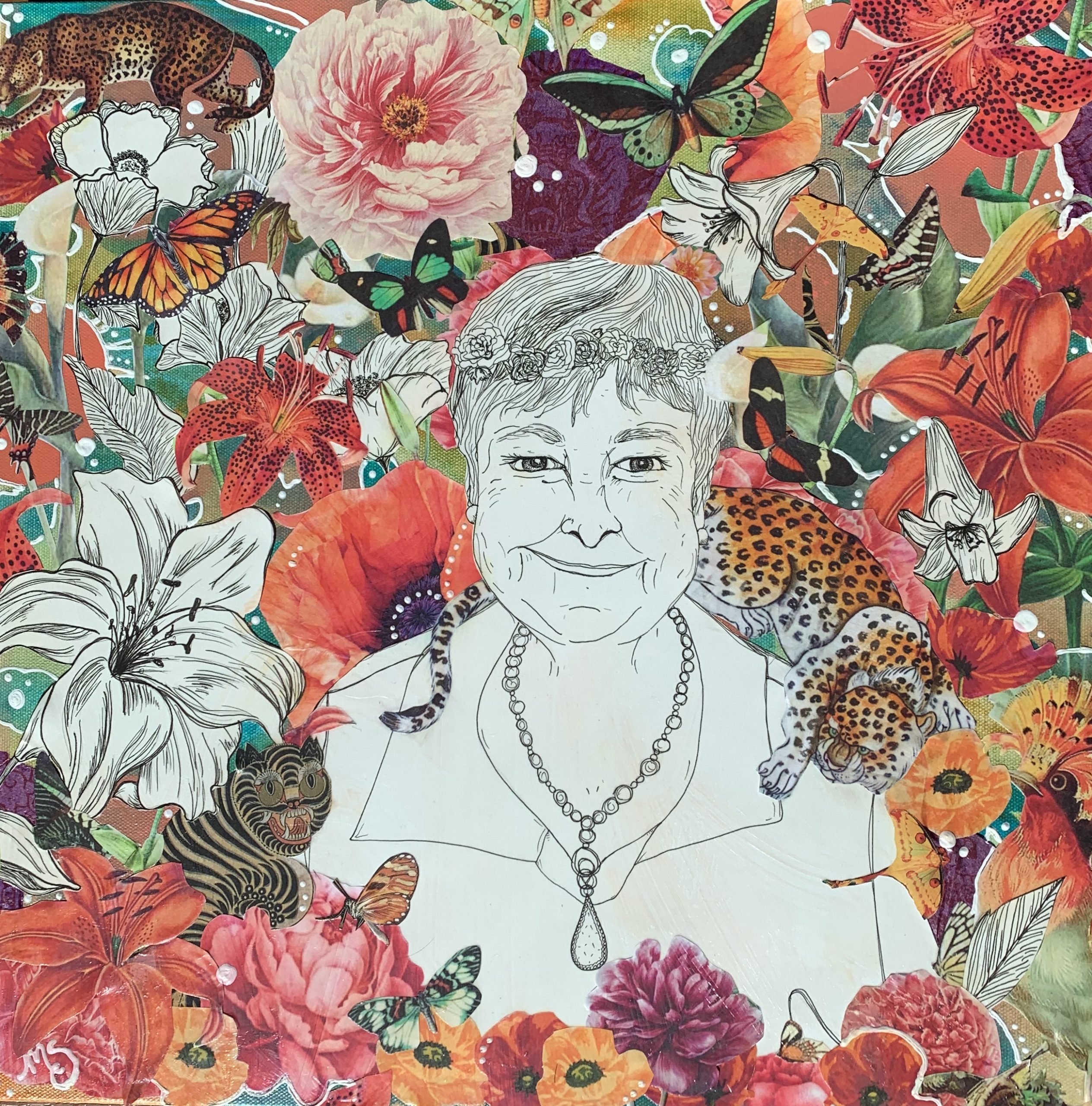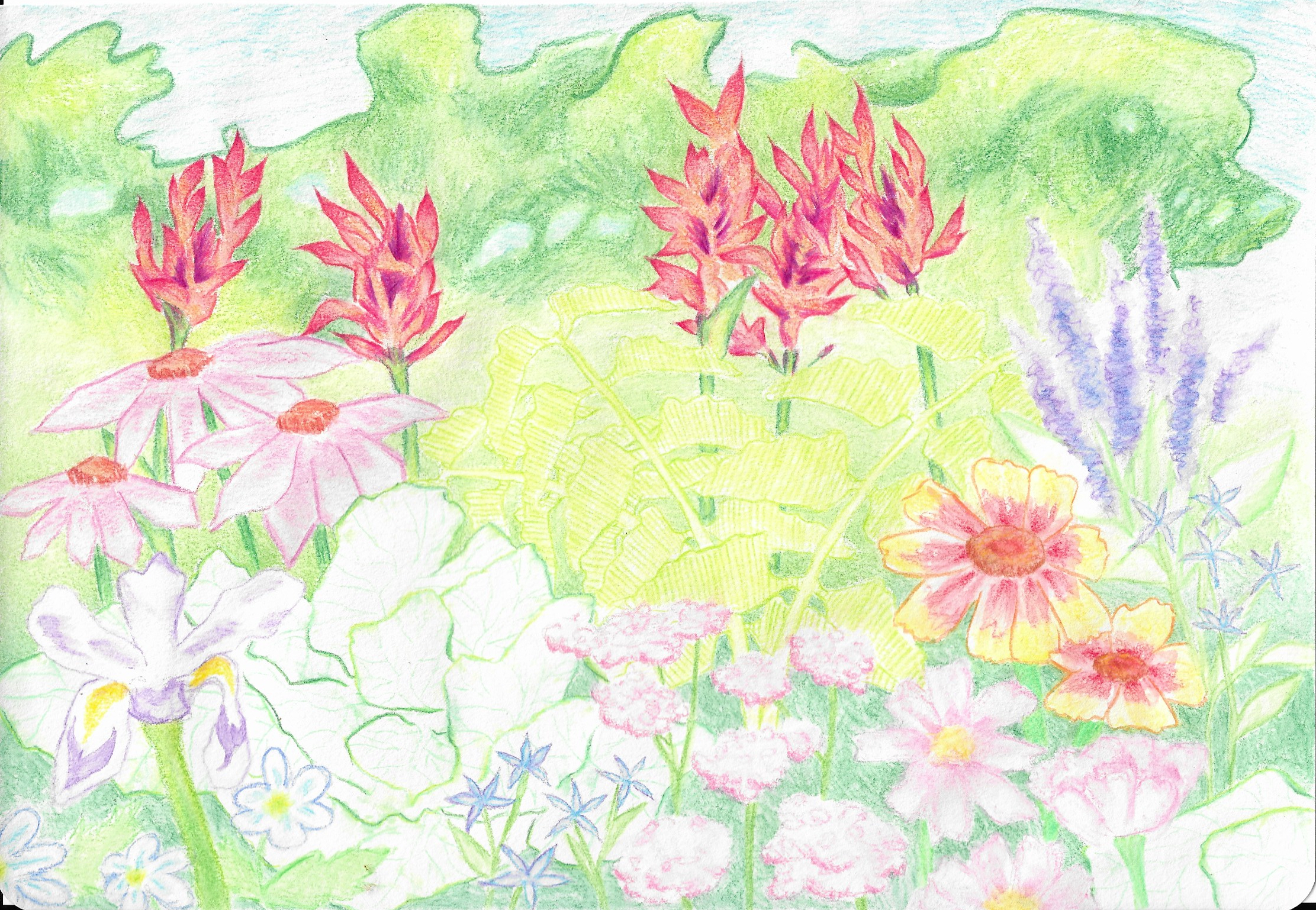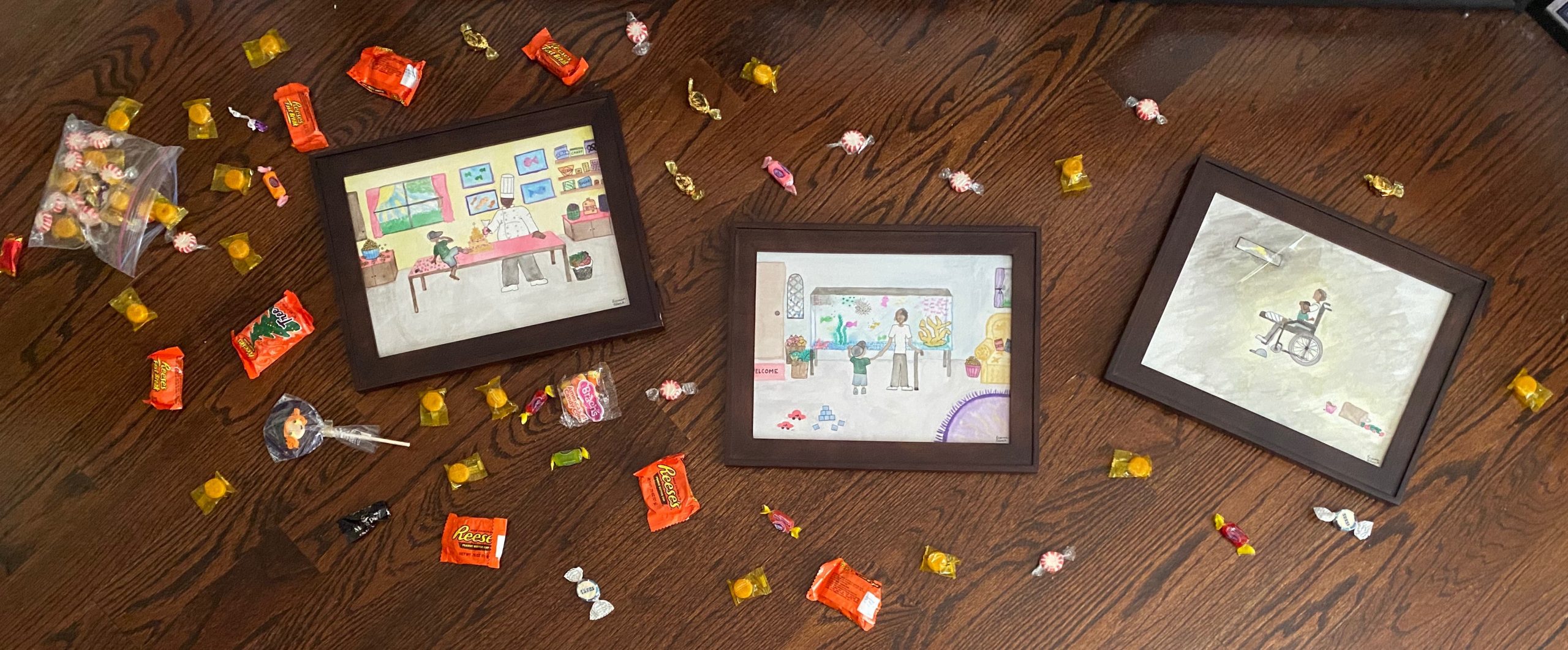My painting, titled Tactile, is inspired by the incredible woman I have gotten to know over the past year and her journey into her next creative phase of life. A retired mortician, she loved her uncommon job and enjoyed working with her hands to prepare lost loved ones to be celebrated, cherished, and mourned. Throughout her career, she sought to bring joy and beauty into even the darkest moments for families experiencing a loss by working hard to dress and cosmetically prepare the deceased to match the appearance and spirit by which the families remembered them. Now retired and visually impaired, she is hoping to embark on her next creative chapter by learning pottery at the local senior center. I painted her hands with one slightly more stationary and the other reaching further to depict all that she has created so far alongside what she might create in the future. While her visual impairment brought a difficult end to her former career, I hope her passion for the tactile and sculptural qualities of her work can be channeled into generating something new using her skilled, hard-working hands.
About the Artist: Miranda Xiao Morris
I have been practicing fine art since age eleven and was excited to explore my love of the humanities and social sciences further through my undergrad majors in studio art and policy studies. I sought to embark on my medical education through a lens of humanistic studies, rather than viewing the discipline of the humanities as a supplement to STEM/medicine. Therefore, SCOPES spoke to me immediately as an incredible opportunity to navigate the complexity of patient connections using the toolkit of creative reflection. While there are few blueprints for a career as a physician-artist, I am motivated by the creative and thoughtful energy of my peers and the support of faculty. I hope to channel my interests towards exploring the intersection where art and healing meet by engaging with humanistic medicine, creative art therapy, and teaching art observation as a means to learn clinical observation. I believe the practice and observation of art serve to strengthen the valuable skills of attentiveness, presence, and intuition which foster connections in the delicate, privileged space of patient interactions.

